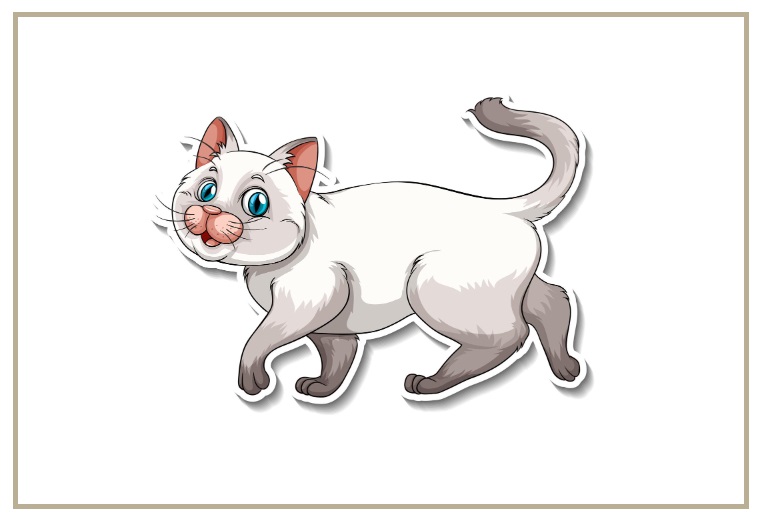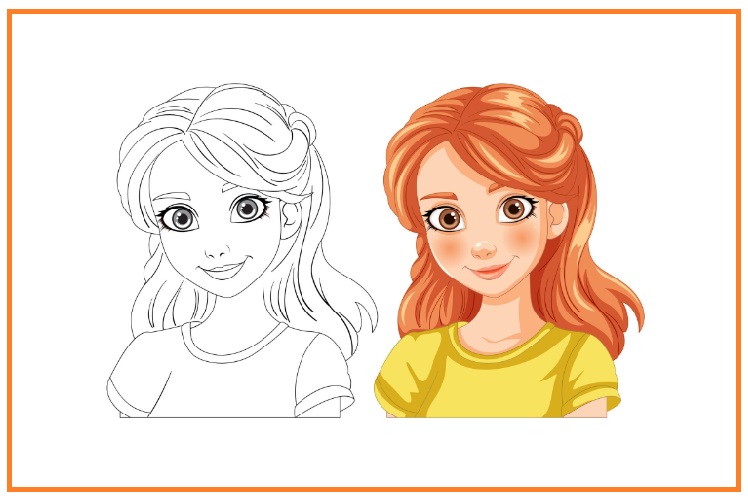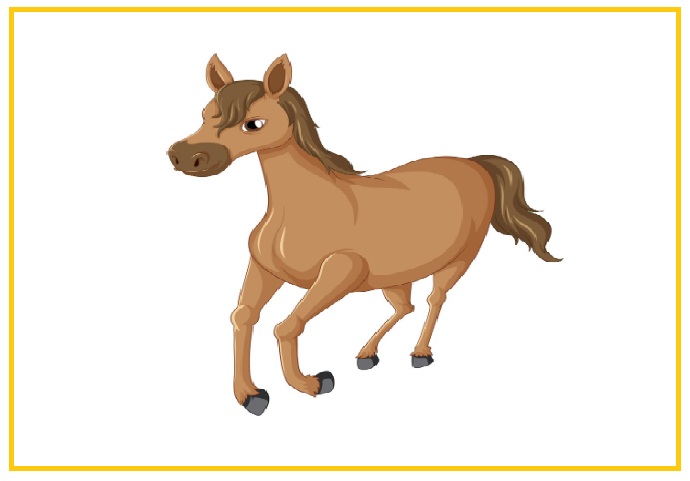
FreePik.com
Introduction To Art:Mfyjcu3hidu= Cat
Cats have a unique charm that captivates everyone, from their quirky antics to those mesmerizing eyes. It’s no wonder that cat lovers often find themselves inspired to capture this magic through art. Whether you’re an experienced artist or just starting out, creating cat art can be both fulfilling and fun. With the right materials and techniques, you can transform your love for these furry companions into stunning pieces of artwork. Dive in as we explore Art:Mfyjcu3hidu= Cat how to bring your feline friends to life on canvas or through other creative mediums!
Materials Needed for Cat Art
- Creating cat art requires the right materials to help bring your vision to life. Start with a good-quality sketchbook or canvas as your base. The surface you choose will impact the final look of your artwork.
- Pencils and erasers are essential for sketching out initial designs. A variety of brush sizes will be helpful if you’re painting, allowing you to capture both fine details and broader strokes.
- Selecting paints is crucial; whether acrylics, watercolors, or oils, each medium has its unique charm. Don’t forget about palettes for mixing colors your color choices can make a big difference in capturing that feline essence.
- Consider adding some finishing touches with markers or colored pencils for intricate detailing. With these materials ready at hand, you’ll be all set to unleash your creativity!
Step-by-Step Guide to Creating Art:Mfyjcu3hidu= Cat
- Creating Art:Mfyjcu3hidu= Cat can be a delightful process. Start by choosing the right reference photo. A clear image of your feline muse will provide guidance throughout your artistic journey.
- Next, sketch out your design lightly on paper or canvas. This step allows you to position elements before committing them fully. Don’t hesitate to adjust proportions during this phase.
- Once you’re satisfied with the outline, select and mix colors that reflect your vision. Consider both realistic hues and more whimsical shades for added flair.
- When painting fur, explore various techniques to capture texture—dabbing for fluffiness or smooth strokes for sleek coats work well here. Experimentation is key; don’t shy away from trying new methods as you go along!
A. Choosing the Right Reference Photo Baby:Po7rqszg-9y= Cat
Choosing the right reference Art:Mfyjcu3hidu= Cat photo is crucial in creating captivating cat art. A great image can inspire your creativity and guide your brush strokes.
Start by selecting a photo that resonates with you. It could be an adorable kitten, a majestic feline lounging in the sun, or even a quirky pose that makes you smile. The mood of the picture sets the tone for your artwork.
Pay attention to lighting and shadows in the photo. Good lighting enhances details and textures, making it easier to capture those unique fur patterns.
Also consider composition. A well-framed shot will draw viewers into your piece, showcasing not just the cat but also its environment.
Ensure you’re using a high-resolution image. This allows for precise details without pixelation during creation. Your reference photo should ignite excitement about bringing this furry subject to life on canvas!
B. Sketching Out Your Art:Mfyjcu3hidu= Cat Design
Once you’ve chosen your reference photo, it’s time to sketch out your design. Grab a pencil and some paper—don’t worry about perfection just yet. This is all about capturing the essence of your cat.
Start with basic shapes. Outline the head, body, and limbs using simple circles and ovals. This method helps you get proportions right without feeling overwhelmed by details.
Next, focus on features like ears, eyes, and whiskers. Pay attention to their unique expressions; every cat has its personality! Lightly draw these elements before committing with darker lines.
As you refine your sketch, add in fur direction indicators. These will guide you when it’s time for painting or coloring later on. Remember: this is just a foundation—feel free to adjust as inspiration strikes!
C. Selecting and Mixing Colors For Baby:Po7rqszg-9y= Cat
Choosing the right colors can bring your Art:Mfyjcu3hidu= Cat to life. Start by observing your reference photo closely. Notice the subtle variations in fur tones, shadows, and highlights.
When mixing colors, aim for a palette that captures these nuances. Use a color wheel as a guide to understand complementary shades and harmonies. This will help create depth in your artwork.
Start with base colors for the main areas of fur. Gradually blend lighter or darker hues to mimic realistic textures. Don’t be afraid to experiment—mixing unexpected shades can yield beautiful results.
Always test mixed colors on scrap paper first. This lets you see how they look once applied without risking your piece.
Remember, layering is key in creating vibrancy and dimension. Build up slowly; it’s easier to add than take away!
D. Painting Techniques for Different Fur Textures
When depicting cat fur, the texture is key. Different breeds boast a variety of fur types, from sleek Siamese to fluffy Persians. Each requires distinct techniques.
For short-haired cats, use smooth brush strokes. A flat brush can create a polished look that mimics their fine coats. Blend colors subtly for realistic shadows and highlights.
Longer fur demands more dynamic action. Employ a fan brush or even your fingers to add layers of depth. Focus on individual strands with quick flicks of your wrist to capture the lightness and flow.
Don’t forget about color variation! Cats often have patches or stripes; layering different shades adds dimension and realism. Use glazing techniques for transparency in areas like underbellies where light plays softly across their coats.
Experiment and observe real cats as inspiration—your paintbrush should mimic their unique personalities and styles through every stroke you make.
Art:Mfyjcu3hidu= Cat Tips for Adding Extra Details and Personalization
Adding extra details can truly elevate your cat art. Small touches create a deeper connection with the viewer.
Consider capturing the unique traits of your cat. Is it their playful nature or that quirky little whisker? Focus on these elements, and they’ll shine through in your work.
Textures play a significant role as well. Try incorporating patterns into the background that reflect your feline’s personality, like paw prints or favorite toys.
Personalization doesn’t stop at visuals. Think about including their name or a meaningful quote related to cats. This adds an emotional layer to the piece.
Experiment with different mediums for added depth. A splash of glitter or metallic paint can highlight certain areas beautifully and make them pop.
Don’t forget about framing! Choosing a style that complements your artwork can enhance its presence in any room, making it even more special.
Alternative Methods for Creating Art:Mfyjcu3hidu= Cat
Exploring alternative methods for creating cat art opens up a world of creativity. Digital art is a fantastic option, allowing you to experiment with colors and textures effortlessly. With software like Procreate or Adobe Photoshop, you can manipulate images and create intricate designs without the mess.
Collage offers another unique approach. Gather magazines, fabric scraps, or even photographs of cats. Layer them together for an eye-catching piece that tells a story about your feline companion.
Sculpture provides a tactile experience. Use clay or recycled materials to shape three-dimensional representations of cats. This method adds depth and dimension to your artistic expression.
Each technique invites personal flair while celebrating our beloved furry friends in diverse ways!
A. Digital Art
Digital art offers a modern twist to cat portraits. It allows for endless creativity without the mess of traditional materials. Using software like Procreate or Adobe Photoshop, you can experiment with colors and textures easily.
Start by selecting a high-quality photo of your feline inspiration. This serves as your base layer. From there, you can outline the features using digital brushes that mimic pencils or pens.
One advantage is the ability to undo mistakes instantly. Adjust shapes and colors with just a click, making it perfect for beginners who may feel intimidated by paintbrushes.
Moreover, layering techniques in digital platforms enable you to add depth effortlessly. Play with opacity settings to create realistic fur effects that bring your artwork to life! The flexibility of digital tools can help express your unique style while capturing the essence of cats beautifully.
B. Collage
Creating Art:Mfyjcu3hidu= Cat or Baby:Po7rqszg-9y= Cat through collage can be a delightful and creative endeavor. This method allows for a mix of textures and colors, making each piece truly one-of-a-kind.
Start by gathering materials like old magazines, fabric scraps, or even photographs of cats. The variety in your chosen items will add depth to your artwork.
Next, think about how you’d like to arrange the pieces. Layering is key in collage art; it creates visual interest and dimension. Don’t be afraid to overlap images or cut them into unique shapes.
Adhering everything can be part of the fun too! Use glue sticks for paper elements or mod podge for more substantial materials. Adding embellishments like glitter or beads can enhance the final look.
Let your imagination flow freely as you create! There’s no right or wrong way when crafting cat-themed collages—just enjoy the process!
C. Sculpture
Sculpture offers a unique way to capture the essence of cats in three dimensions. You can use materials like clay, wire, or recycled items to create your feline masterpiece.
Start Baby:Po7rqszg-9y= Cat by choosing a pose that reflects your cat’s personality — whether it’s lounging lazily or playfully pouncing. If you’re using clay, consider armature construction for stability.
For those experimenting with mixed media, try combining various textures and colors to enhance realism. Wire sculptures can be twisted into dynamic poses; paint them after shaping for an eye-catching finish.
Regardless of the technique you choose, adding small details such as whiskers or fur patterns will bring your creation to life. Don’t shy away from letting your creativity shine through! Making cat art is not just about the end product but also enjoying every moment of the process and expressing love for our furry friends through artistic endeavors.


